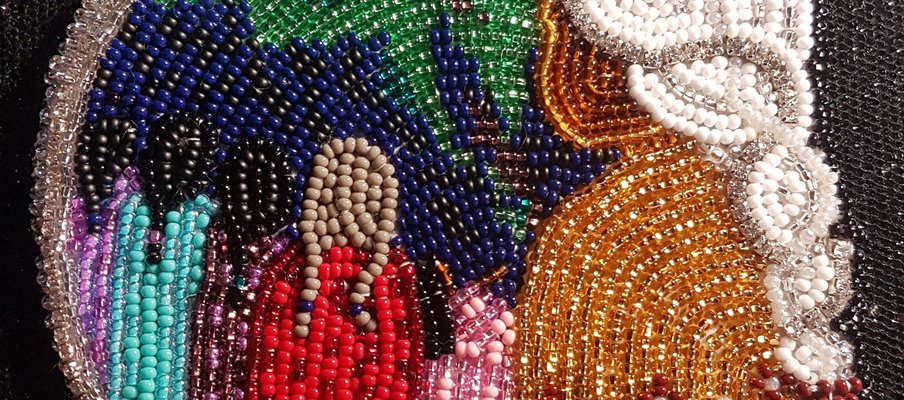
Beading connects youth to culture and develops patience
In this issue
 Engage - Volume 14, Issue 2, Spring 2024
Engage - Volume 14, Issue 2, Spring 2024
Related Programs
During COVID, Lindsay Smith used beading to pass the time and to connect to her Cree heritage. She also found it helped her cope better with the isolation. So, when she was asked to teach a beading class for the Dream Broker program at W.J. Berezowsky School in Prince Albert, she knew she needed to say “yes”.
Smith, who has been beading since 2014, says, “That’s why I was really interested in providing these teachings to the students to reconnect them to their culture and to give them some skills to cope with their mental health, so they have something healthy to turn to.”
When Smith taught the program, she focused on teaching patience by helping the youth, ages 10-14, recognize how to get in the right mindset before beading, as well as how to go back and fix a mistake.
“I told them to bead with a good heart. If you’re angry, if you’re feeling frustrated, let’s talk about that before you start beading, otherwise it’s not going to work out.” Smith also taught the kids to recognize their emotions by how they chose certain colours of beads, on certain days, depending on their mood.
Laurie Huet, Dream Broker, W.J. Berezowsky School, says Smith’s way of teaching the youth was beautiful and gentle. “Lindsay taught about patience and being in a good mindset, or your thread will knot up, as well as, everybody’s equal who’s sitting at the table.”
Huet goes onto say cultural programming, such as beading classes and ribbon skirtmaking, are needed by the students at the school, who are 70 per cent Indigenous and often face barriers to participation. In her role as a Dream Broker, Huet works to connect children and youth to cultural activities so they can experience pride in their culture.
By the end of the beading sessions, the participants had made earrings and lanyards. But most importantly, she says, many youth found out they were good at something artistic, which gave them confidence. The students also connected in other ways. She says, “They were able to realize that they could do things on their own, as well as, getting ideas off of each other.”
One particular student, who barely spoke at the beginning of the sessions, stands out for both Smith and Huet. Smith says, “She was very closed off at the beginning and wouldn’t talk, but she was a natural beader. By the third or fourth class, she was talking and willing to help other students when they were stuck. That young girl came out of her shell. She was very humble. She didn’t brag or anything about her work, but you could tell she felt good about it.”
Another student is now selling her bead work at the local Farmers’ Market and finding her passion in beading. Smith says, “She told me, I just like to share it now. I know how to do this and people like what I’m doing.”
The Dream Broker program, offered in seven schools in Saskatchewan, is supported with funding from Sask Lotteries. This program received additional support from Creative Kids.

